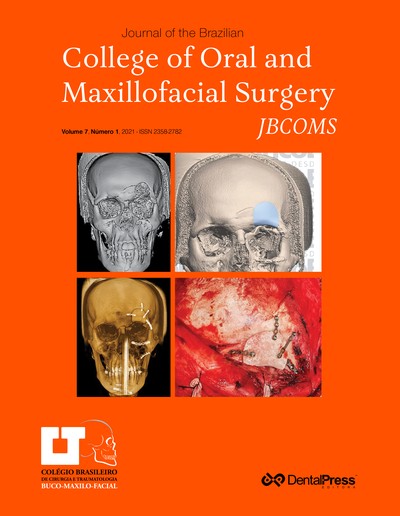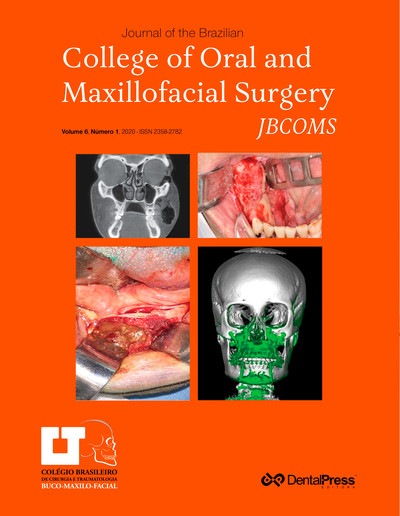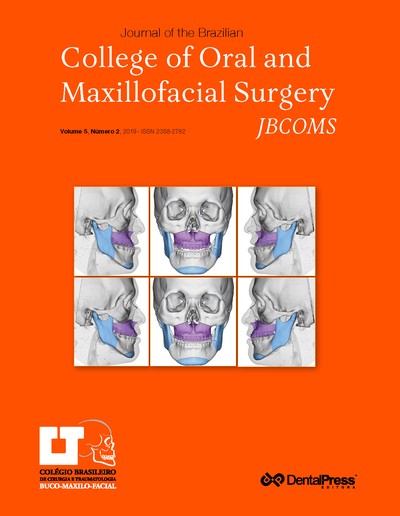
Evaluation of different measurement methods for facial analysis in orthographic surgery
Leandro Almeida Nascimento Barros, Raildo Silva Coqueiro, Matheus Melo Pithon, Luciano Cincurá Silva Santos
Objective: To evaluate if there are significant differences between the techniques of digital (using the Digital Smile Design, DSD) and manual measurements (using goniometer and cephalometry). Methods: A comparative cross-sectional study was performed with a sample of 18 individuals (male and female, mean age = 23 years) with different dentofacial deformities. Manual, digital (DSD) and cephalometric measurements of each of these individuals were evaluated and compared to each other. The anatomical points measured in soft tissue were A’ and Pog’. Pearson correlation coefficient and Students t-test were used for variables with normal distribution, Spearmans coefficient and Mann-Whitney test for samples with abnormal distribution, with significance level of 5%. Results: There were no statistically significant differences between the measurement methods: manual/digital, manual/cephalometric and digital/cephalometric, (p> 0.05). Linear correlation tests of the Pog point presented a very strong correlation: manual/DSD (r = 0.93), manual/cephalometric (r = 0.93) and digital/cephalometric (r = 0.99). At point A, correlations in the comparison were: manual/DSD (r = 0.69), moderate; manual/cephalometric (r = 0.67), moderate; digital/cephalometric (r = 0.96), very strong. Conclusions: There were no significant differences between the techniques. The DSD measurement values are more correlated with cephalometry than the manual technique.
Keywords: Orthognathic surgery. Photography. Planning. Smiling.
How to cite: Barros LAN, Coqueiro RS, Pithon MM, Santos LCS. Evaluation of different measurement methods for facial analysis in orthographic surgery. J Braz Coll Oral Maxillofac Surg. 2019 Jan-Apr;5(1):14-21. DOI: https://doi.org/10.14436/2358-2782.5.1.014-021.oar
Monday, May 13, 2024 07:43










